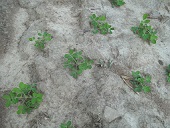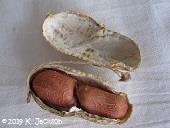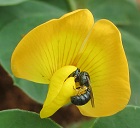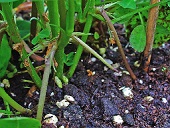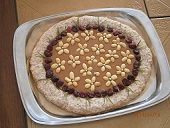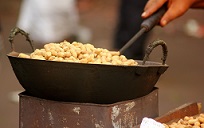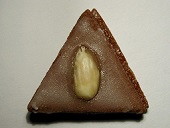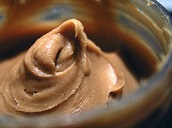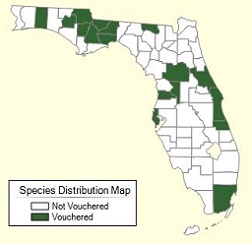| Peanuts - Arachis hypogaea | ||||||||||||||||||||||||||||||
|---|---|---|---|---|---|---|---|---|---|---|---|---|---|---|---|---|---|---|---|---|---|---|---|---|---|---|---|---|---|---|
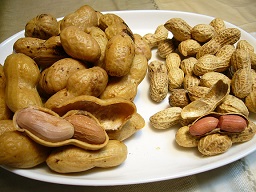 Fig. 1  Big boiled peanuts and normal peanuts, Japan 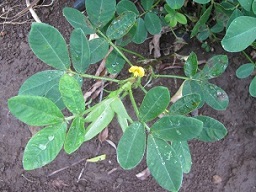 Fig. 2  Arachis hypogaea (Peanut), leaves and flower, Hawai'i 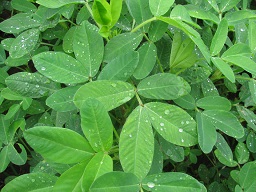 Fig. 3  A. hypogaea (Peanut) leaves, Hawai'i 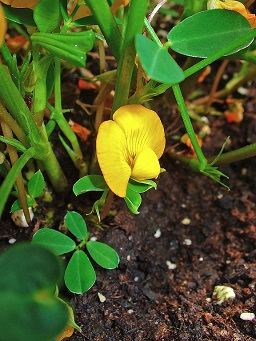 Fig. 4  A. hypogaea flower 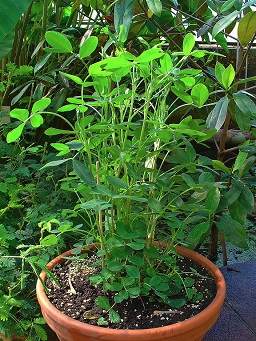 Fig. 5  A. hypogaea, habitus, Botanical Garden KIT, Germany 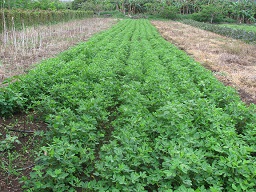 Fig. 6  A. hypogaea (Peanut) crop, Hawai'i 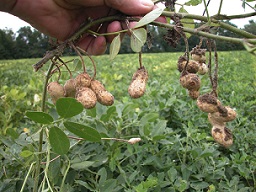 Fig. 12  Peanut leaves and freshly dug pods, South Carolina 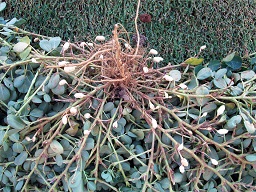 Fig. 13  Drought-sensitive peanut yield from deficit irrigation. Compare to the image below, which shows the yield from the same species grown with full irrigation 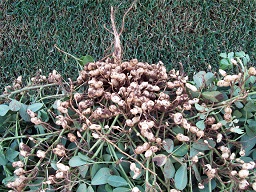 Fig. 14  Drought-sensitive peanut yield from full irrigation. Compare to the image above, which shows the yield from the same species grown with deficit irrigation 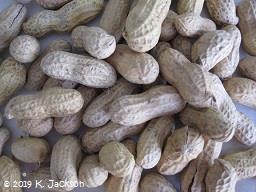 Fig. 15  Jumbo peanuts 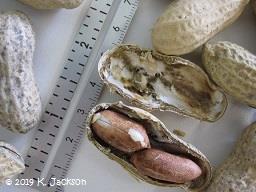 Fig. 17  Jumbo peanuts: inches and millimeters 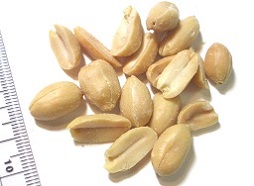 Fig. 18  Peanuts (scale:1mm) 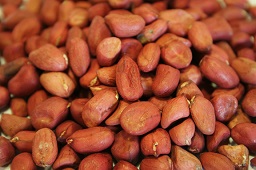 Fig. 19  Uncooked peanuts (A. hypogaea) 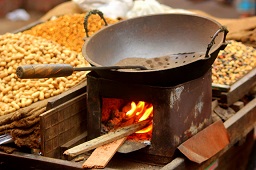 Fig. 20  Frying Peanuts, street shop, Dhaka 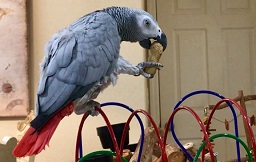 Fig. 28 
Petra loves a peanut 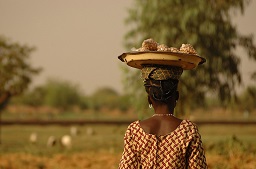 Fig. 29  Peanut seller in Ouagadougou |
Scientific
name Arachis hypogaea L. Common names Earth almond, earth nut, grass nut, goober, goober peas, groundnut, monkey nuts, pig nuts, pindar, pygmy nuts 2,12 Synonyms A. hypogaea var. hypogaea; A. hypogaea subsp. nambyquarae (Hoehne) A. Chev.; A. hypogaea var. nambyquarae (Hoehne) Burkart; A. hypogaea subsp. oleifera A. Chev.; A. hypogaea subsp. sylvestris A.Chev. 7 Relatives A. glabrata Benth., Perennial peanut, grassnut Family Fabaceae ⁄ Leguminosae – Pea family 8 Origin South America 3 Uses Food: peanut butter, candy, roasted, peanut oil; feed supplement for beef cows; pods as fuel, in kitty litter. Peanut oil: soaps; landscape ground-cover; peanuts skins: beverages at the National Peanut Research Laboratory (NPRL) 6 Plant habit Low-growing indeterminate legume with a central upright stem 2,14 Life cycle Annual Leaves Made up of 4 leaflets 5 Flowers Yellow, borne in the leaf axils; above or below ground; singly or clusters of about three Pods/Hull Develop underground, contain usually 1 to 3 seeds 2 Kernel/seed Covered with a thin papery seed coat (testa) 2 USDA Nutrient Content: raw, oil-roasted, dry-roasted pdf Sowing season North: 1 Apr.-15 May, central: 15 Mar.-15 May 2 Days to harvest Depending on variety: boiling: 75-85; roasting: 135-150 Soil tolerance Well drained; compacted clay soils are not conducive to good growth or pegging 1 pH preference Optimal near 6.0; produces well over a wide range 1 Sowing depth Sandy soils: 2-3 in.; finer textured soil: 1.5-2 in. 1,2 Spacing Seeds: 2-4 in. (5-10 cm) depending on row pattern and variety 1,5 Row: 30-36 in. (76-91 cm) for ease of tilling 1 Light requirement Sunny 1 Water requirement Irrigate when rainfall is limited 6 Drought tolerant Peanuts are somewhat drought tolerant at certain growth stages 5 Flood tolerance Pods may not form, or may rot and decay from diseases 1 Temperature requirement 50-100 °F (10-38 °C) Soil sowing temperature Optimum range: 64-75°F 5 Roots Can reach down to 6 ft Invasive potential * None reported Pest resistance Attractive to squirrels, birds, raccoons, rats and other animals 1 Known hazard Many people are violently allergic to peanut; aflatoxin 9,14 Reading Material Peanuts—Arachis hypogaea L., University of Florida pdf Producing Peanuts for Home Use, University of Florida pdf Producing Peanuts for the Fresh (Green/Boiling) Market, University of Florida pdf (Archived) Management and Cultural Practices for Peanuts, University of Florida pdf Origin Originally from South America, peanuts are grown in the warm climates of Asia, Africa, Australia, and North America. Peanuts are grown commercially in 13 states: Alabama, Arkansas, Florida, Georgia, Louisiana, Missouri, Mississippi, North Carolina, New Mexico, Oklahoma, South Carolina, Texas and Virginia. 10 Florida is a major producer of boiling peanuts, which are usually planted early and throughout the year (February–July) to keep a continuous supply. 11 About 75% of U.S. peanuts are used domestically. The rest are exported primarily to Canada, Japan, and Western Europe. Americans eat an average 3.5 pounds of peanut butter per person per year. 6,10,11 Description Peanuts are adapted to all portions of Florida except South Florida. Most of the commercial acreage of boiling peanuts is in central and north Florida, but peanuts are also planted for early spring harvest in warm areas of southern counties. 2,4
Fig. 7. Young groundnut plants in a field Fig. 8. Raw Jumbo peanut Fig. 9. A. hypogaea L. Herbarium specimen
Video 1. Perfectly Sustainable Peanut v1 Flowers Peanuts reproduce by a fairly rare method called geocarpy, meaning that the plant flowers above ground, but the fruit forms and matures underground. 3 The Latin word hypogaea means: underground; developing in the earth. 13 Pollination After self-pollination, the ovary that produces the pods is pushed into the soil by pegs (reproductive stem), where the pod develops. 2
Fig. 10. Carpenter bee pollinating groundnut flower, Mozambique Fig. 11. A. hypogaea, reproductive stems Cultivars Two subspecies are grown commercially, and four market types are of greatest economic importance. A. hypogaea subsp. hypogaea includes the market types “runner” and “Virginia,” and A. hypogaea subsp. fastigata includes the market types “Spanish” and “Valencia.” 14 For Florida, the following are suggested: ‘Florigiant,’ a Virginia type maturing in about 135 days; ‘Florunner’ and ‘Sunrunner’, runner types maturing in about 135 days; and ‘Starr,’ a Spanish type maturing in about 120 days. Other Spanish types that may be planted are ‘Tifspan,’ ‘Sancross,’ and ‘Tamnut 74.’ 2 Peanut Variety Fact Sheet, University of Florida pdf (archived) FloRun™ '331' Peanut Variety, University of Florida pdf Peanut Variety Performance in Florida, 2005 – 2008, University of Florida pdf (archived) Harvesting Peanuts flower over a long period of time and so pods do not mature at the same time. The pods are closely clustered at the base of the bunch type; the runner varieties have pods scattered along their prostrate branches from base to tip. Peanuts for boiling are usually harvested at an earlier maturity than for roasting. Peanuts for dry use are usually harvested when about 75% of the hulls have a dark interior surface. 1,2
Fig. 16. Seed peanuts. Top, including inferior nuts and trash as delivered by the picker. Bottom, recleaned and hand-selected peanuts Methods to Evaluate Peanut Maturity for Optimal Seed Quality and Yield, University of Florida pdf Curing Pile the plants into fluffy, well-aerated piles (called windrows). Allow to “cure” in this fashion for 5 to 10 days of warm temperatures and relatively dry weather without rain. Reducing the moisture content of the seeds and pods is the main purpose of curing. (Proper curing is necessary to insure desirable flavor, texture, and overall quality.) 2 Whatever method of drying is used, be sure that mold or rot does not develop on the peanuts. Flavor and food safety of the nuts can be affected by molds because of toxins produced by certain fungi. 1 Seed storage Time to 50% loss in viability: >4 years at 41 °F (5 °C) 14 Fertilizing The peanut is a legume and, therefore, is capable of fixing nitrogen within its root nodules. Where peanuts are grown for the first time, inoculation of the seeds is advised. 2 Peanuts respond better to residual fertility than to direct fertilization. If a well-fertilized crop precedes peanuts, direct fertilization may not increase yield or quality of the peanuts. 1 If fertilizer is needed, broadcast and incorporate it with the soil prior to land preparation. Foliar sprays of nutrients are generally ineffective or not economically feasible, except to prevent or correct some micronutrient deficiencies. Boron is often the only micro-nutrient that might be need to be added for peanuts but can often be found in the fertilizer applied prior to planting. 1 For development of well-filled nuts, an adequate supply of calcium must be available in the fruiting zone. Agricultural gypsum is often applied beside the row after the plants are blooming. 2 Peanut Fertilization, University of Florida Irrigation Irrigation may be needed for consistent production on deep sands. If it is dry after planting, be sure to irrigate to get the peanuts up to a good stand. Peanuts are somewhat drought tolerant at certain growth stages. Over irrigation can increase the risk of disease while under irrigation can increase the risk of aflatoxin contamination. 5,17 Peanut Irrigation, University of Florida Pests/Diseases There are naturally occurring fungi (molds) found in soil. One common fungus is called "white mold" or "southern blight" (Sclerotium rolfsii). This fungus usually damages roots, stems, and pods. Good land management practices (crop rotation, irrigation, etc.) or fungicides can be used to control this problem. Another mold, Aspergillus, has 2 species (A. flavus, A. parasiticus) which can be a problem. During the latter part of the growing season, peanuts are especially susceptible to drought and high temperatures. Under those conditions these fungi, can infect peanuts and produce a chemical (aflatoxin) which can potentially pose health and economic risks. 6 Pest Management and Monitoring, University of Florida Weed Management in Peanuts, University of Florida pdf Integrated Management of Southern Blight in Vegetable Production, University of Florida pdf Food uses The nuts can be eaten raw or boiled while “green” (undried) or they can be dried and stored for eating raw, or roasting (either in-shell or shelled). 1 Place peanuts in their shells in a single layer on a baking sheet, bake at 350 °F (177 °C) for 20 to 30 mins (Fig. 15).
Fig. 21. Egg-shaped mazurek made of shortcrust-like pastry, covered with fudge caramel cream (ingredients: krówki, milk, sweet cream, butter), decorated with peanuts, silver dragées, dried cranberries and lime zest. The ingredients used for decoration of the edge of the cake remain top secret. Made in Poland, Łódź, Easter 2014. Fig. 22. Slow cooker with green peanuts. Cover with water, add salt and boil for about 1½ hours until soft. Fig. 23. Frying peanuts, street shop, Dhaka Fig. 24. Biscuit with peanuts Fig. 25. Peanut butter in the jar Fig. 26. 2010 brown bomber cupcake Fig. 27. Satay chicken, peanut sauce How to Grow the Peanut and 105 Ways of Preparing it for Human Consumption, 1925, Tuskegee Institute, Alabama Nutritional value Peanuts contain approximately 21 - 36% protein Peanuts are naturally cholesterol-free Peanuts and peanut butter are more inexpensive than other sources of protein, such as, meats and cheeses Peanuts and peanut butter are good sources of many essential vitamins and minerals Peanuts and peanut butter are a good source of folic acid 2-3 servings of peanuts can help reduce LDL cholesterol and risk of cardiovascular disease ** Peanuts can also inhibit growth of certain cancers ** Eating peanuts can curb hunger and can help control weight gain 6 Medicinal Properties ** Activities (Peanut) — Antiaggregant; Antioxidant; Aperient; Aphrodisiac; Astringent; Cyanogenic; Demulcent; Emollient; Fungicide; Lactagogue; Pectoral; Peptic; Radioprotective. Indications (Peanut) — Arthrosis; Cholecystosis; Colic; Cystosis; Dandruff; Dermatosis; Diabetes; Dislocation; Dyslactea; Eczema; Fungus; Gonorrhea; Ichthyosis; Infection; Inflammation; Mycosis; Nephrosis; Neuralgia; Plantar Wart; Rheumatism; Wart; Xeroderma. 9 Toxicity The USDA has set acceptable limits for aflatoxin in shelled peanuts. All peanuts are chemically checked for the presence of aflatoxin. Lots shown to contain # 15 ppb of aflatoxin are acceptable for use in food for humans. Those rejected can be used to obtain peanut oil, which upon processing is aflatoxin-free. 6 Other Uses Production of Biofuel Crops in Florida: Peanut, University of Florida pdf
Further Reading American Peanut Council ext. link Boiled Peanut World ext. link Decoding the Peanut, USDA, Agricultural Research Service Florida Peanut Producers Association ext. link National Peanut Board ext. link Peanut and Tree Nut Processors Association ext. link Peanut Butter Lovers ext. link Perennial Peanut Arachis glabrata, Eat The Weeds Southeastern Peanut Farmer ext. link Value-Added Use for Peanut Skins, USDA, Agricultural Research Service Botanical Art Older Material Peanut and Peanut Butter Recipes, 1966, U.S. Dept. of Agriculture pdf Peanut Growing for Profit, 1920, U.S. Dept. of Agriculture pdf Arachis hypogaea, 1919, 1972, Sturtevant’s Edible Plants Of The World Peanuts, 1909, U.S. Dept. of Agriculture pdf List of Growers and Vendors |
|||||||||||||||||||||||||||||
| Bibliography 1 Wright, D. L. et al. "Producing Peanuts for Home Use." Agronomy Dept., SSAGR31, University of Florida IFAS Extension, Original pub. Dec. 1995, Rev. Dec. 2001 and Dec. 2016, EDIS, edis.ifas.ufl.edu/aa182. Accessed 17 July 2019. 2 Stephens, James M. "Peanuts—Arachis hypogaea L." Horticultural Sciences Dept., HS644, University of Florida IFAS Extension, Original pub. May 1994, rev. Sept. 2015, Rev. Oct, 2018, EDIS, edis.ifas.ufl.edu/mv111. Accessed 11 July 2019. 3 "Peanuts." Gardening Solutions, University of Florida IFAS Extension, gardeningsolutions.ifas.ufl.edu/plants/edibles/vegetables/peanuts.html. Accessed 9 July 2019. 4 Wright, D. L. and B. Tillman. "Producing Peanuts for the Fresh (Green/Boiling) Market." Dept. of Agricultural and Biological Engineering, SS-AGR-190, University of Florida IFAS Extension, Original pub Feb. 2003, Rev. Dec. 2014, Dec. 2017, EDIS, edis.ifas.ufl.edu/ag194. Accessed 12 July 2019. 5 Wright, D. L. et al. "Management and Cultural Practices for Peanuts." Agronomy Dept., SS-AGR-74, University of Florida IFAS Extension, Original pub. Feb. 2000. Revised Sept. 2006, Oct. 2009, Oct. 2010, and Dec. 2016, EDIS, edis.ifas.ufl.edu/aa258. Accessed 8 July 2019. 6 "Peanuts 101 - the Basics." National Peanut Research Laboratory: Dawson, GA, 29 Aug. 2016, USDA Agricultural Research Service, www.ars.usda.gov/southeast-area/dawson-ga/national-peanut-research-laboratory/docs/peanuts-101-the-basics/. Accessed 17 July 2019. 7 " Synonyms for Arachis hypogaea L." The Plant List (2013), Version 1.1, www.theplantlist.org. Accessed 13July 2019. 8 "Arachis hypogaea L., peanut." Plant Profile, USDA, Natural Resources Conservation Service, PLANTS Database, plants.usda.gov/core/profile?symbol=ARHY. Accessed 13 July 2019. 9 Duke, James. "PEANUT (Arachis hypogaea L.)." Handbook of Medicinal Herbs, Second Edition, Boca Raton, CRC Press, 2002. 10 "Peanut Country, U.S.A." Peanut Info, National Peanut Board, www.nationalpeanutboard.org/peanut-info/peanut-country-usa.htm. Accessed 10 July 2019. 11 Ewing, Jim. "Southern Region News Release September Crop Production." National Agricultural Statistics Service, U.S. Dept. of Agriculture, Sept.12, 2018, NASS, www.nass.usda.gov/Statistics_by_State/Regional_Office/Southern/includes/Publications/ Crop_Releases/Monthly_Crop_Production/2018/MonthlyCropProductionSEPT18.pdf. Accessed 10 July 2019. 12 Sturtevant, E. Lewis. Sturtevant’s Edible Plants Of The World. 1919, U. P. Hedrick, Dover Publications, 1972. 13 Harrison, Lorraine. "RHS Latin for Gardeners." London, Octopus Publishing Group, 2012. 14 Maness, Niels. "Peanut." The Commercial Storage of Fruits, Vegetables, and Florist and Nursery Stocks, USDA Agriculture Handbook No. 66, Rev. Feb. 2016, USDA Agricultural Research Service, www.ars.usda.gov/ARSUserFiles/oc/np/CommercialStorage/CommercialStorage.pdf. Accessed 13 July 2019. 15 "Seed Saving Guide." 2017, Seed Savers Exchange, www.seedsavers.org/site/pdf/Seed%20Saving%20Guide_2017.pdf. Accessed 26 Feb. 2017. Photographs Fig. 1 Katorisi. "Boiled big peanuts & normal peanuts, Katori City, Japan." 5 Nov. 2007, Wikimedia Commons, (CC BY 3.0), commons.wikimedia.org/wiki/File:Boiled_big_peanuts_%26_normal_peanuts,_Katori_City,_Japan.jpg. Accessed 14 July 2019. Fig. 2 Starr, Forest and Kim. "Arachis hypogaea (Peanut), Leaves and flower, Waihee, Maui, Hawaii." No. 130221-1608, Feb. 21, 2013, Starr Environmental, (CC BY 2.0), starrenvironmental.com/images/image/?q=24838171459. Accessed 2 Aug. 2019. Fig. 3 Starr, Forest and Kim. "Arachis hypogaea (Peanut), Leaves, Waihee, Maui, Hawaii." No. 130221-1607, Feb. 21, 2013, Starr Environmental, (CC BY 2.0), starrenvironmental.com/images/image/?q=25205841285. Accessed 27 July 2019. Fig. 4 Zell, H. "Arachis hypogaea, Fabaceae, peanut, groundnut, flower; Botanical Garden KIT, Karlsruhe, Germany." 25 April 2010, Wikimedia Commons, (CC BY-SA 3.0), commons.wikimedia.org/wiki/File:Arachis_hypogaea_002.JPG. Accessed 14 Aug. 2019. Fig. 5 Zell, H. "Arachis hypogaea, Fabaceae, Peanut, Groundnut, habitus." Botanical Garden KIT, Karlsruhe, Germany. (CC BY-SA 3.0), 3 June 2010, Wikimedia Commons, commons.wikimedia.org/wiki/File:Arachis_hypogaea_001.JPG. Accessed 14 July 2019. Fig. 6 Starr, Forest and Kim. "Arachis hypogaea (Peanut), Crop, Waihee, Maui, Hawaii." No. 130221-1605, Feb. 21, 2013, Starr Environmental, (CC BY 2.0), starrenvironmental.com/images/image/?q=24575458644. Accessed 27 July 2019. Fig. 7 "Young groundnut plants." International Institute of Tropical Agriculture, 17 Aug. 2011, Flickr, (CC BY-NC 2.0), www.flickr.com/photos/iita-media-library/10189579143/. Accessed 3 Aug. 2019. Fig. 8 Jackson, K. "Raw Jumbo peanut, Arachis hypogaea." 17 July 2019, www.growables.org. Fig. 9 Davis, Barry, S. “Arachis hypogaea L.” Plants of Florida, FLAS 212557, University of Florida Herbarium specimen, Florida Museum of Natural History, 16 July 2003, Herbarium Collections Catalog, www.floridamuseum.ufl.edu/herbarium/cat/imageserver.asp?image=212557a1. Accessed 13 July 2019. Fig. 10 Rulkens, Ton. "Small carpenter bee pollinating groundnut flower." 13 Feb. 2013, Flickr, (CC BY-SA 2.0), www.flickr.com/photos/47108884@N07/8482156552/. Accessed 3 Aug. 2019. Fig. 11 Zell, H. “Arachis hypogaea, Fabaceae, Peanut, Groundnut, habitus; Botanical Garden KIT, Karlsruhe, Germany. The dried fruits are used in homeopathy as remedy: Arachis hypogaea (Ara-h.).” (CC BY-SA 3.0), 10 June 2010, Wikimedia Commons, commons.wikimedia.org/wiki/File:Arachis_hypogaea_006.JPG. Accessed 17 July 2019. Fig. 12 Pollinator. "Peanut leaves and freshly dug pods Stuckey, South Carolina." 1 Dec. 2004, Wikimedia Commons, (CC BY-SA 3.0), commons.wikimedia.org/wiki/File:Peanut_9417.jpg. Accessed 14 Aug. 2019. Fig. 13 Payton, Paxton. "Drought-sensitive peanut yield from deficit irrigation." D1562-1, 13 Aug. 2016, USDA Agricultural Research Service, Public Domain, www.ars.usda.gov/oc/images/photos/jan10/d1562-1/. Accessed 17 July 2019. Fig. 14 Payton, Paxton. "Drought-sensitive peanut yield from full irrigation." D1561-1, 17 May 2017, USDA Agricultural Research Service, Public Domain, www.ars.usda.gov/oc/images/photos/jan10/d1561-1/. Accessed 17 July 2019. Fig. 15 Jackson, K. "Jumbo peanuts." 17 July 2019, www.growables.org. Fig. 16 Beattie, W. R. "Seed peanuts." Peanut Growing for Profit 1127, Farmers' Bulletin, July 1920, Organic Roots Collection, U.S. Dept. of Agriculture Collection, naldc.nal.usda.gov/catalog/ORC00000334. Accessed 11 July 2019. Fig. 17 Jackson, K. "Jumbo peanuts: inches and millimeters, Arachis hypogaea." 27 July 2019, www.growables.org. Fig. 18 Aney. "Peanuts (scale:1mm)." 20 Mar. 2006, Wikimedia Commons, (CC BY-SA 3.0), commons.wikimedia.org/wiki/File:Arachis_hypogaea_002.JPG. Accessed 17 July 2019. Fig. 19 Han, Noj. "Uncooked peanuts." 4, Oct. 2004, Flickr, (CC BY-SA 2.0), www.flickr.com/photos/nojhan/2919522850/in/photostream/. Accessed 3 Aug. 2019. Fig. 20,23 Nasir Khan Saikat. "Frying Peanuts on a street shop of Dhaka." 29 June 2012, Wikimedia Commons, (CC BY-SA 3.0), commons.wikimedia.org/wiki/File:Frying_Peanut_(Arachis_hypogaea)_on_a_street_shop_(2).jpg. Accessed 14 July 2019. Fig. 21 SpiderMum. "Mazurek egg." 19 Apr. 2014, Wikimedia Commons, (CC BY-SA 4.0), commons.wikimedia.org/wiki/File:Mazurek_egg.JPG. Accessed 18 July 2019. Fig. 22 Harvey, G., "Slow cooker with peanuts." c 2004. Fig. 23 Paolo Neo. "Biscuit with peanuts." 17 Feb. 2013, Wikimedia Commons, Public Domain, commons.wikimedia.org/wiki/File:Biscuit_with_peanuts.jpg. Accessed 18 July 2019. Fig. 24 Paolo Neo. "Mazurek egg." 17 Feb. 2013, Wikimedia Commons, Public Domain, commons.wikimedia.org/wiki/File:Biscuit_with_peanuts.jpg. Accessed 18 July 2019. Fig. 25 PiccoloNamek. "Peanut Butter in the jar." 14 Jan. 2006, Wikimedia Commons, (CC BY-SA 3.0), commons.wikimedia.org/wiki/File:PeanutButter.jpg. Accessed 14 July 2019. Fig. 26 Vegan Feast Catering. "2010 Brown Bomber Cupcake." 31 Dec. 2009, Flickr, (CC BY 2.0), www.flickr.com/photos/veganfeast/4232315995/in/photostream/. Accessed 17 July 2019. Fig. 27 Huahom. "Satay Chicken, Peanut Sauce." 9 Aug. 2018, Pixabay, (CC0), pixabay.com/photos/satay-chicken-peanut-sauce-thai-food-3604856/. Accessed 3 Aug. 2019. Fig. 28 PetraGrey. "Petra loves a peanut." 30 Nov 2017, Wikimedia Commons, (CC BY-SA 4.0), Image cropped, commons.wikimedia.org/wiki/File:African_Grey_Petra_and_her_favorite_treat_with_Alexa.jpg. Accessed 17 July 2019. Fig. 29 Bonnefoy, Roman. “Peanuts seller in Ouagadougou.” (CC BY-SA 3.0), 23 Apr. 2008, Wikimedia Commons, commons.wikimedia.org/w/index.php?curid=3954825. Accessed 14 July 2019. Fig. 30 Wunderlin, R. P., et al. "Arachis hypogaea Distribution Map." Atlas of Florida Plants, [S. M. Landry and K. N. Campbell (application development), USF Water Institute.] Institute for Systematic Botany, University of South Florida, Tampa, 2019, florida.plantatlas.usf.edu/Plant.aspx?id=1317). Accessed 13 July 2019. Video v1 "Perfectly Sustainable Peanut." How Peanuts Grow, National Peanut Board, www.nationalpeanutboard.org/peanut-info/how-peanuts-grow.htm. Accessed 10 July 2019. * UF/IFAS Assessment of Non-native Plants in Florida's Natural Areas ** The information provided above is not intended to be used as a guide for treatment of medical conditions using plants. Published 1 Aug. 2019 KJ. Last update 18 Dec. 2019 KJ |
||||||||||||||||||||||||||||||
